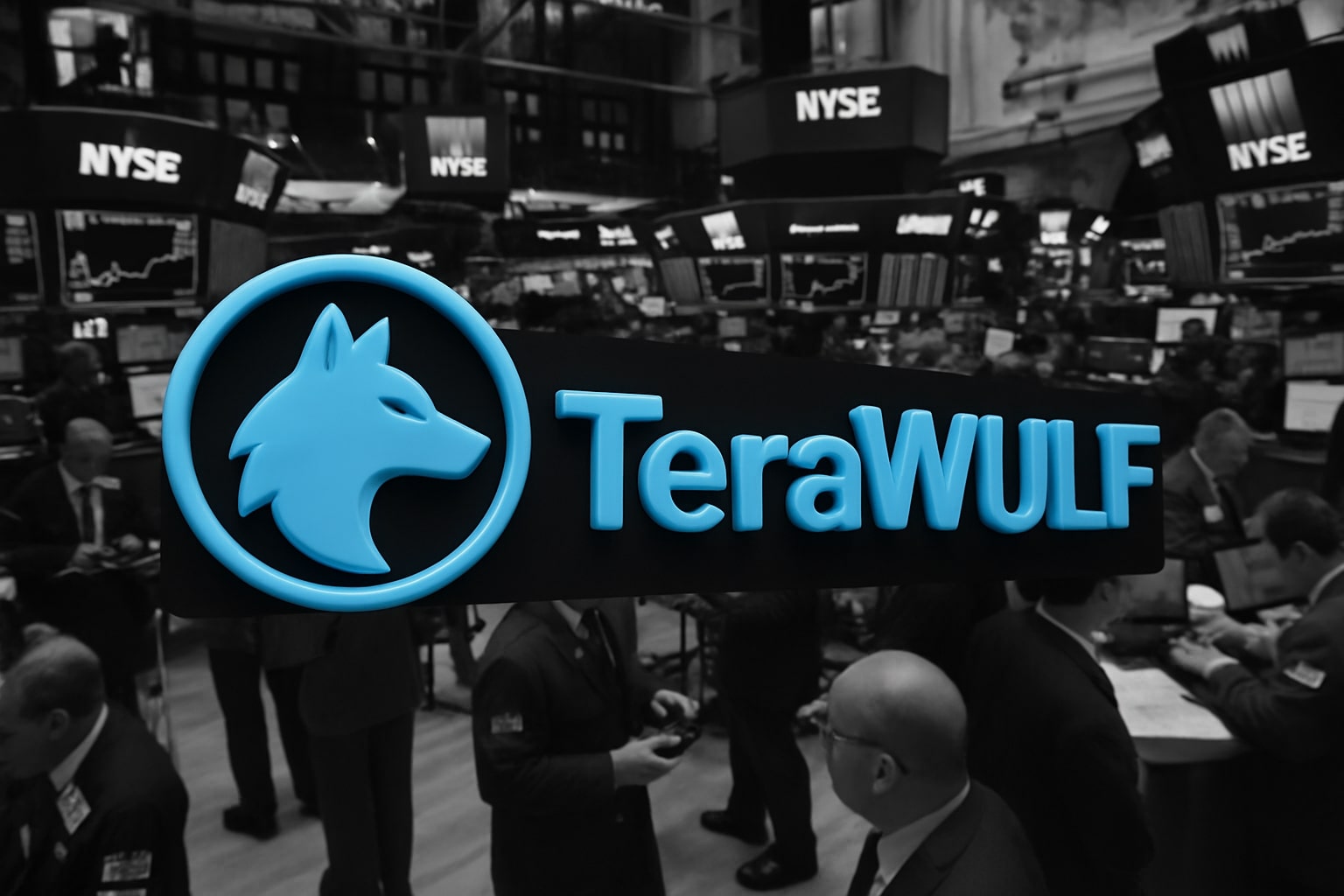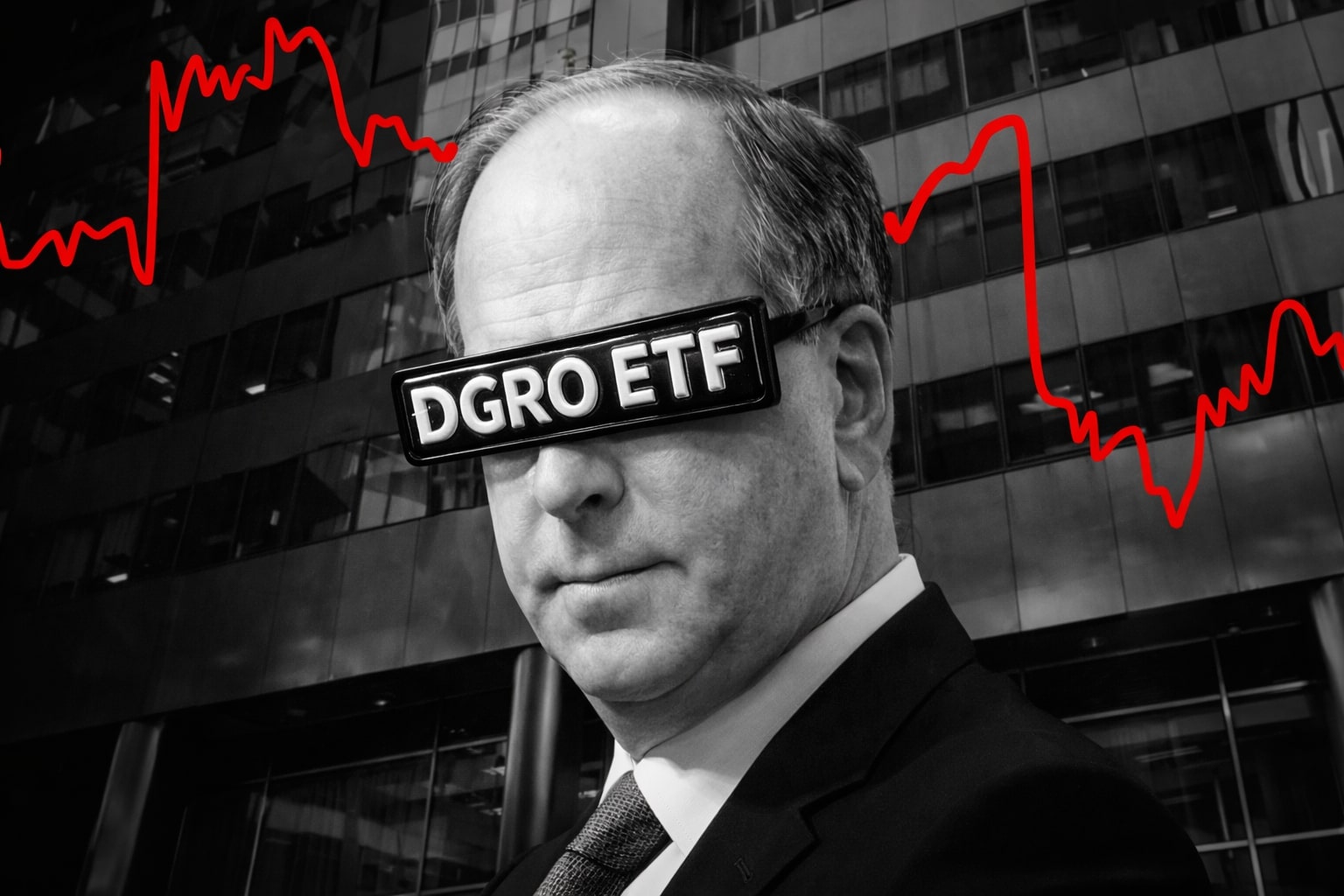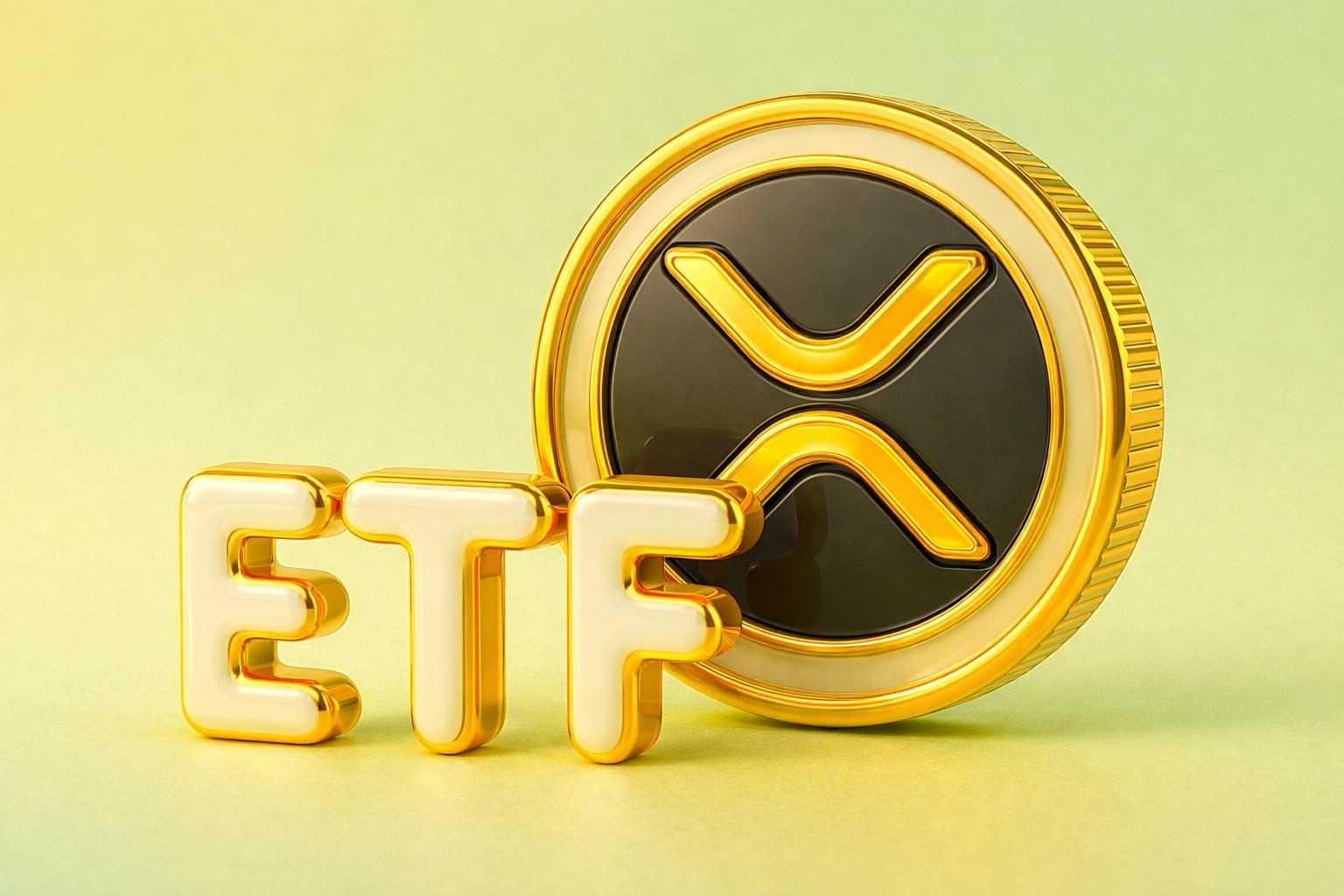
TeraWulf Stock Price Forecast - WULF Jumps to $14.22 as Google Deal and $15.7B AI Contracts
Powered by Google’s $3.2B guarantee and Core42’s $1B deal, TeraWulf evolves from miner to AI powerhouse. With revenue up 33.9% YoY, Lake Mariner’s 360 MW expansion, and analysts eyeing $16.50–$20.00 per share | That's TradingNEWS
TeraWulf (NASDAQ:WULF) Redefines Its Core: From Bitcoin Miner to $15.7B AI Infrastructure Partner
The Strategic Shift that Rewired WULF’s Identity
TeraWulf Inc. (NASDAQ:WULF) has transitioned from a volatile Bitcoin miner into a legitimate AI-driven data-center power player. At a current share price of $14.22, the company commands a $5.81 billion market cap, reflecting a staggering +236% one-year rally and +1,101% three-year return, outpacing the S&P 500’s 81.45%. That performance is not a speculative accident—it’s the result of TeraWulf’s complete pivot from crypto to high-performance computing (HPC) infrastructure, underpinned by its partnerships with Google, Fluidstack, and Core42.
TeraWulf’s Lake Mariner campus in upstate New York—originally a 245 MW Bitcoin mine—has become the backbone of its new AI infrastructure strategy. The site’s transformation into an energy-efficient data-center hub gives WULF access to clients demanding massive compute capacity for AI workloads while maintaining a sustainable footprint powered by nuclear and hydroelectric energy.
The $15.7 Billion Turnaround: Google’s 14% Stake and the “Put” that Changes the Risk Curve
The turning point came when Alphabet Inc. entered the picture through Fluidstack, crafting what the market now calls the “Google Put.” The deal commits WULF to build roughly 360 MW of new HPC capacity for Google and Fluidstack at Lake Mariner, generating $6.7 billion in contracted revenue and an additional $9 billion in optional lease extensions over ten years. Google backstops $3.2 billion of lease obligations—essentially guaranteeing half the deal’s value—and simultaneously takes a 14% equity stake in TeraWulf.
That capital assurance gives WULF investment-grade credit leverage that other AI-infrastructure entrants can’t replicate. With an estimated $3 billion already raised in debt to finance construction, CFO Patrick Fleury’s strategy to “throw more resources at schedule” rather than dilute shareholders is visible in the numbers: debt now totals about $500.9 million, backed by $89.9 million in cash and an enterprise value near $5.17 billion.
Core42: The Billion-Dollar Catalyst That Started the Reinvention
Before Google’s arrival, WULF’s first major step beyond crypto came through its Core42 partnership in the UAE. That deal, worth up to $1 billion across a decade, involved delivering 70 MW of turnkey AI-ready data-center capacity. With utilization targets near $1.5 million per megawatt hour, Core42 marked the inflection point that showed WULF could monetize its energy-dense assets far beyond mining economics. Each megawatt of AI infrastructure now yields nearly 10 times the revenue of its Bitcoin equivalent, reshaping future margin potential.
HPC Economics and AI Tailwinds Reshape the Growth Trajectory
WULF’s pivot arrives amid an unprecedented boom in AI compute demand. Hyperscalers like Amazon, Microsoft, and Google have driven data-center leasing prices up to roughly $218 per kW, a +77% jump from 2019 levels. This surge fuels WULF’s forward guidance: analysts now expect revenue of $206 million in 2025, doubling to $421.6 million in 2026, implying a 104% YoY growth rate, and crossing $820 million by FY 2027 with $448 million EBITDA.
At today’s valuation, that translates to a forward EV/Sales multiple of 7.2× and EV/EBITDA ≈ 13.2× by 2027—remarkably cheap versus peers like CoreWeave (16.4×) or Oracle (14×). TeraWulf’s enterprise value of $5.9 billion positions it near early-stage hyperscalers, yet its growth CAGR of ~100% exceeds almost every data-center REIT or neocloud competitor.
Bitcoin Exposure Transformed into Leverage, Not Dependence
While still generating about $144 million TTM from mining, the exposure to Bitcoin has become optional rather than existential. WULF mines with nearly zero-carbon power sources, using renewable hydro and nuclear energy to maintain margins despite the 2024 halving event that cut block rewards by 50%. Bitcoin seasonality now acts as a cyclical tailwind—Q4 historically brings +79% average gains in BTC—rather than a risk anchor.
Pro-crypto U.S. legislation, including the GENIUS Act, legitimizes stablecoin frameworks and signals long-term institutional acceptance. That policy backdrop gives WULF’s hybrid model—a blend of AI data centers and crypto mining—a dual-engine advantage: resilience from sustainable energy and torque from Bitcoin rallies.
Valuation Context: Premium Multiples, but Growth Justifies the Price
The market assigns WULF a Price/Sales ratio of 31× and EV/Revenue ≈ 36× on a trailing basis, far above the sector median of 3×. Yet the valuation premium aligns with the company’s pivot velocity and contract pipeline. In comparison, CoreWeave’s $9 billion acquisition of Core Scientific priced that target at 28.6× EV/Sales despite slower 41% CAGR. Against hyperscalers—Amazon 3.3×, Google 7.1×, Microsoft 11.8×—TeraWulf’s growth runway warrants its speculative premium.
The balance sheet is still under pressure: profit margin at –91.4%, ROE –47%, and ROA –11%. But these are early-cycle effects of massive CapEx. The $205 million negative free cash flow mirrors the infrastructure investment phase of early-stage cloud providers circa 2012–2014. Consensus expects EPS of –$0.34 in 2025, narrowing to –$0.13 in 2026, and flipping positive to +$0.33 by FY 2027. Applying a 50× multiple—common for high-growth AI names—values the stock near $16.50, a 24% upside from current levels, aligning with recent analyst targets ranging from $14.50 to $21.50.
Read More
-
DGRO ETF Price: Is DGRO at $69.17 Still the Better Dividend-Growth Bet?
17.12.2025 · TradingNEWS ArchiveStocks
-
XRP Price Stuck Below $2 As XRPI at $10.74 and XRPR at $15.26 Ride $1B+ ETF Inflows
17.12.2025 · TradingNEWS ArchiveCrypto
-
Natural Gas Price Forecast - NG=F Steady Near $4 as TTF Jumps on Colder Forecasts and LNG Outage Risk
17.12.2025 · TradingNEWS ArchiveCommodities
-
USD/JPY Price Forecast: USDJPY=X 155.50 Pivot Before BoJ Hike and US CPI
17.12.2025 · TradingNEWS ArchiveForex
Liquidity, Short Pressure, and Insider Dynamics
WULF trades with unusually heavy volume—~48.6 million shares avg. 3 months—and a short interest near 30% of float (≈ 102 million shares). This creates a coiled-spring dynamic: any positive earnings surprise or major contract milestone could ignite a sharp covering rally. Despite overbought RSI levels above 70 recently, institutional positioning continues to build; insiders control 27.7% of shares while institutions hold 54.3%, suggesting alignment with long-term growth. Tracking insider behavior through the WULF transaction log remains critical for gauging conviction through 2026’s build-out phase.
Operational Execution and Risk Landscape
Construction deadlines at Lake Mariner are aggressive: 40 MW online by H1 2026, 320 MW by H2 2026. That expansion demands flawless execution and timely financing. Dilution risk—previously +30% CAGR in share count—may now moderate thanks to Google’s backstop. The bigger operational hazard lies in client concentration. Fluidstack and Core42 currently represent roughly 332 MW combined commitments, and a slowdown in hyperscaler AI spend could pressure utilization.
Still, WULF’s model avoids the GPU-ownership trap plaguing providers like Oracle, whose server rentals yield only ~14% gross margins due to chip depreciation. By leasing power, racks, and cooling—while partners supply GPUs—TeraWulf preserves asset flexibility and margin scalability as demand surges.
Technical Picture and Market Behavior
At $14.22, WULF trades just below its $15.51 52-week high and well above the $2.06 low, with the 50-day MA ≈ $9.52 and 200-day MA ≈ $5.51. The technical uptrend remains intact; however, momentum indicators warn of near-term consolidation after a +555% six-month surge. RSI readings above 70 signal temporary exhaustion, while rising short interest suggests volatility spikes around earnings.
Earnings Momentum and Outlook Through 2027
Revenue jumped 33.9% YoY last quarter to $47.6 million, beating estimates by 16%. Analysts model $56 million Q3 2025 and $68 million Q4, implying 47% annual growth this year and a doubling next. EPS losses narrowed to –$0.03 Q2, well ahead of the –$0.06 consensus. Each quarter now shows sequential improvement, reflecting early HPC revenue recognition.
If WULF executes on its build schedule and leverages Google’s financing muscle, 2026 could mark its first EBITDA-positive year. With operating margins projected to swing from –21.6% to low-teens positive, the business will start compounding cash at scale, transforming sentiment from speculative to structural.
Strategic Positioning Within the AI-Infrastructure Boom
The AI data-center market is projected to expand from $15 billion in 2024 to $93.6 billion by 2032, a CAGR near 24%. WULF’s focus on infrastructure rather than compute ownership positions it at the foundation of that expansion. By offering clean power and modular capacity instead of GPUs, it stays capital-light compared with hyperscalers while capturing demand overflow from cloud giants racing to deploy AI workloads.
Its vertically integrated design and low-cost zero-carbon energy portfolio—unique among U.S. peers—make it especially attractive for sustainability-driven clients. As data-center REITs like Digital Realty and Equinix face power constraints, TeraWulf’s model fills a critical gap in scalable, green compute infrastructure.
Verdict on NASDAQ:WULF — Rating: BUY
Every metric converges toward one thesis: TeraWulf (NASDAQ:WULF) is no longer a miner—it is an infrastructure growth story with asymmetric upside. The blend of a $15.7 billion contract pipeline, Google’s $3.2 billion guarantee, and a rapidly compounding 100% revenue CAGR establishes WULF as a credible next-generation data-center player.
Valuation premiums reflect justified optimism. While overbought technicals and client concentration introduce short-term risk, the magnitude of secured revenue, balance-sheet transformation, and macro tailwinds argue for continued appreciation once consolidation clears.
At $14.22, the stock remains a BUY with a 12-month target range of $16.50–$18.00, extending toward $20+ if FY 2026 guidance confirms execution of the Lake Mariner expansion and the Google/Fluidstack contracts convert to recurring revenue.
For live metrics and chart performance, monitor NASDAQ:WULF in real time—the evolution from crypto miner to AI infrastructure backbone is no longer a projection; it’s being built megawatt by megawatt.


















